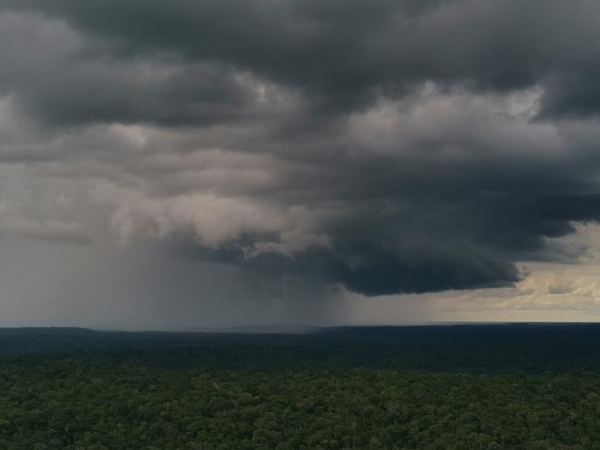Rainfall induces bursts of natural nanoparticles that can form clouds and further precipitation over the Amazon rainforest.
Atmospheric aerosol particles are essential for the formation of clouds and precipitation, thereby influencing the Earth’s energy budget, water cycle, and climate. However, the origin of aerosol particles in pristine air over the Amazon rainforest during the wet season is poorly understood. A new study, led by the Max Planck Institute for Chemistry in Mainz, reveals that rainfall regularly induces bursts of newly formed nanoparticles in the air above the forest canopy.
During the wet season in the Amazon rainforest heavy rainfall frequently occurs during the afternoon. For clouds and precipitation to develop, tiny airborne particles known as cloud condensation nuclei are required for water vapor to condense and form cloud droplets. But what are the origins of these cloud condensation nuclei?
An international research team from Germany, Brazil, Sweden, and China now showed that rainfall regularly induces bursts of nanoparticles that can grow to form cloud condensation nuclei. The scientists analyzed comprehensive long-term measurements of aerosol particles, trace gases, and meteorological data from the Amazon Tall Tower Observatory, ATTO, which is equipped with sophisticated instrumentation and measurement towers that are up to 325 m high. The observatory is located in the middle of the Amazon rainforest in northern Brazil, about 150 kilometers north-east of Manaus, and jointly operated by scientists from Germany and Brazil.
Read more at Max Planck Institute for Chemistry
Image: A rain front approaches the ATTO research station in the Amazon rainforest. (Credit: Sebastian Brill, Max Planck Institute for Chemistry)
Sci/Tech Climate Pollution Top Stories
